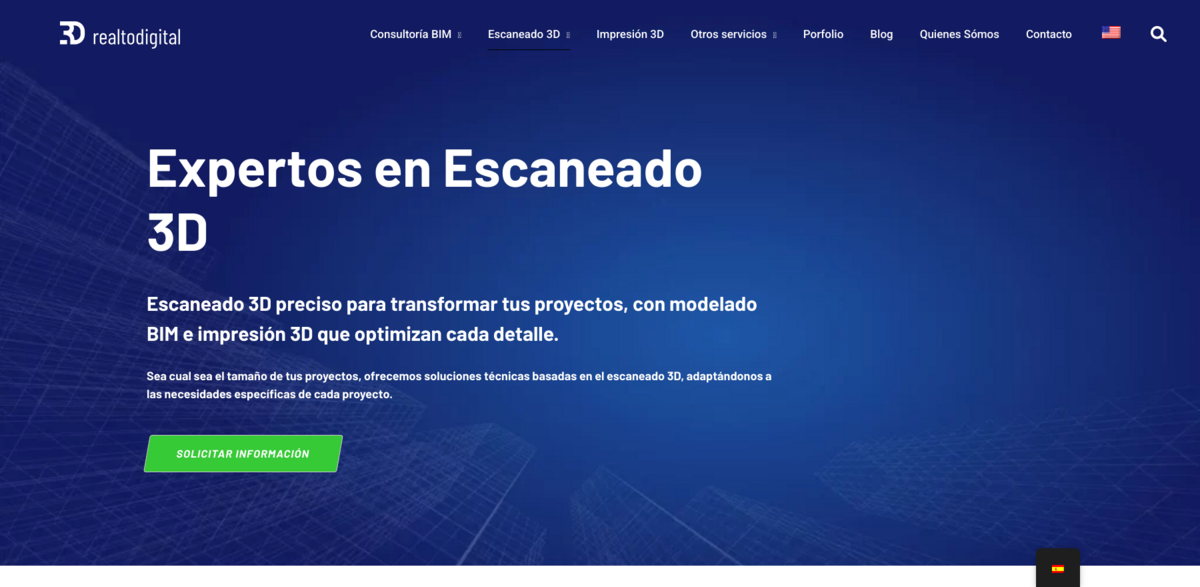What is 3D Scanning and BIM Consulting?
3D scanning is all about capturing the shape, size, and unique characteristics of any object or construction with pinpoint precision. Whether it’s industrial parts, works of art, homes, or factories, this technology guarantees detailed digital reproductions. Paired with BIM (Building Information Modeling) consulting, it transforms how construction projects are planned and executed—optimizing every detail from start to finish. Imagine turning real-world structures into exact digital twins, making renovations, quality control, and project management smoother than ever.
Main Benefits of 3D Scanning in Construction
3D scanning has become a game-changer in construction projects, offering precision and agility that traditional methods just can’t match. Here’s why it stands out:
- Renovation and Remodeling: Detailed digital models of existing buildings help plan renovations with zero margin for error.
- Preservation of Cultural Heritage: Digitally preserving historical monuments ensures exact replicas for future generations.
- Quality Control: High-precision 3D metrology verifies manufactured products meet strict quality standards.
- Fast Turnaround: Urgent projects get scanned files delivered within 24 to 48 hours.
- Compatibility: Files work seamlessly with CAD programs and various surface formats for design or manufacturing.
Specialized 3D Scanning Services
The range of 3D scanning services is broad and adaptable. From scanning pieces of all sizes, materials, and geometries to reverse engineering for part optimization, the technology fits diverse needs. It’s not just about capturing geometry—color and texture are included too, providing a complete digital replica. Plus, scanned files can be turned into physical 3D printed replicas or used for CNC machining and mold creation. This flexibility makes 3D scanning a versatile tool across industries.
BIM Consulting: Optimizing Construction Projects
BIM methodology is a cornerstone for improving construction project management and efficiency. It centralizes all project information in a single digital environment, reducing errors and cutting costs linked to late changes. By integrating architects, engineers, and builders through shared digital models, BIM boosts collaboration and keeps everyone on the same page. It also helps ensure compliance with regulations by simulating and analyzing designs before construction begins. The result? Smoother workflows, fewer surprises, and faster delivery times.
Advanced Tools and Customized BIM Services
Using cutting-edge BIM software like Revit, Archicad, and Navisworks, BIM consulting services offer tailored solutions for every project. Whether it’s clash detection, construction simulations, or outsourcing BIM modeling, the approach is always customized to meet specific client needs. This tech-savvy, client-focused mindset ensures precision and performance, making complex projects manageable and efficient. The constant innovation behind these services keeps quality and productivity at the forefront.
Project Impact: Sustainable Development Goals (SDGs) Linked
- SDG 9: Industry, Innovation, and Infrastructure – Enhancing infrastructure through precise digital modeling and innovative scanning technology.
- SDG 11: Sustainable Cities and Communities – Supporting renovation and preservation of buildings, including cultural heritage sites.
- SDG 12: Responsible Consumption and Production – Improving quality control and reducing waste through accurate measurements and reverse engineering.
- SDG 13: Climate Action – Facilitating efficient project planning that minimizes resource use and environmental impact.
Why 3D Scanning and BIM Matter Today
In today’s fast-paced construction world, 3D scanning and BIM consulting aren’t just nice-to-haves—they’re essentials. They bring clarity to complex projects, reduce costly mistakes, and speed up timelines. Whether it’s preserving a historic building or optimizing a factory layout, these technologies provide the digital backbone for smarter, more sustainable construction. So, if transformation is the goal, embracing these tools is the way forward.





















